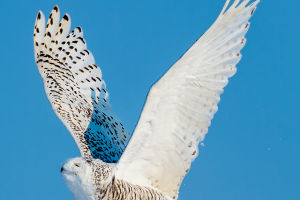Kingfisher Star
It’s always a thrill to see a completely unfamiliar bird when exploring a new area. But there is also a comfort in recognizing something relatable when exploring a new area. A great example of both the unique and the familiar are the kingfishers.
It is classified into three subfamilies, there are more 100 different species of kingfishers worldwide. Most are easily recognizable as kingfishers, even if the exact species is unknown. Motmots, bee-eaters, todies, rollers, and ground-rollers are all related to kingfishers and fit within the Coraciiformes order.
The plumage of most kingfishers is bright, with green and blue being the most common colours. The brightness of the colours is neither the product of iridescence (except in the American kingfishers) or pigments, but is instead caused by the structure of the feathers, which causes scattering of blue light .
The kingfishers have long, dagger-like bills. The bill is usually longer and more compressed in species that hunt fish, and shorter and more broad in species that hunt prey off the ground.
The largest and most atypical bill is that of the shovel-billed kookaburra, which is used to dig through the forest floor in search of prey. They generally have short legs, although species that feed on the ground have longer tarsi. Most species have four toes, three of which are forward-pointing.
Here is a world tour of some of the kingfisher all-stars from across the globe.
1.North America
· Belted kingfisher
Belted kingfisher is the reference species for most people in the United States and Canada. With a 20-inch wingspan, the species is about average sized for the family. While striking, the blues of the belted kingfisher are more subdued than many other species. Belted kingfishers survive on a diet heavy in fish, and thus are usually found within close proximity to water.
· Green kingfisher
Green kingfisher is more abundant in Central and South America, but the species can be located in the southwestern reaches of the United States from Arizona to Texas. This is one of the species that will dig nesting burrows, upwards of 3 feet deep, into riverbanks. They are about half the size of belted kingfishers but sport an especially massive bill.
2.Central & South America
· Ringed kingfisher
Ringed kingfisher has an extensive range in Central and South America, but the species does extend into the southern tip of the United States in the lower Rio Grande Valley of Texas. The species has slowing been expanding range in Texas since the 1960s. Ringed kingfishers inhabit both fresh and saltwater environments.
· Amazon kingfisher
Amazon kingfisher is a larger version of the green kingfisher. Like the other kingfishers of the Americas, this species is classified in the Cerylinae or water kingfisher subfamily. These birds often hover in place before diving after aquatic prey. In addition to fish, they will consume amphibians, reptiles, and invertebrates like crustaceans and insects.
3.Australia
· Sacred kingfisher
This turquoise-green kingfisher is found in open forests and on the edges of lakes, mudflats and streams, as well as in parks, golf courses and near garden ponds. Although it feeds mainly on insects and small reptiles, it isn’t above pillaging goldfish from unguarded ponds.
· Buff-breasted paradise kingfisher
Despite its striking red bill and long white tail feathers (which make up half its body length), this species is difficult to spot in the rainforests and gullies where it lives, but is occasionally seen in thickly vegetated gardens. It breeds in Australia and nests in active termite mounds – flying beak-first into the mound until it has dug a hole. Once the young are fledged, they fly with their parents to New Guinea for the winter.


